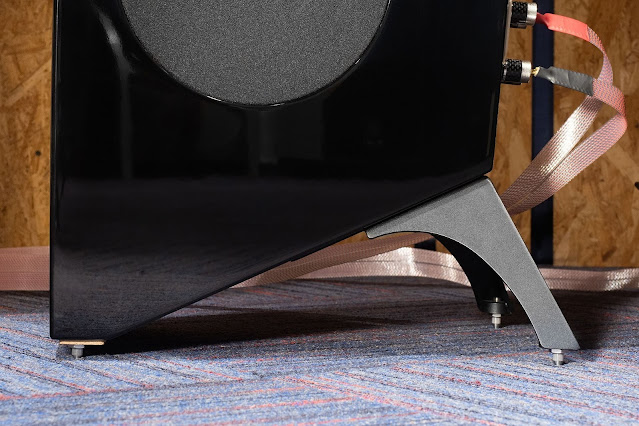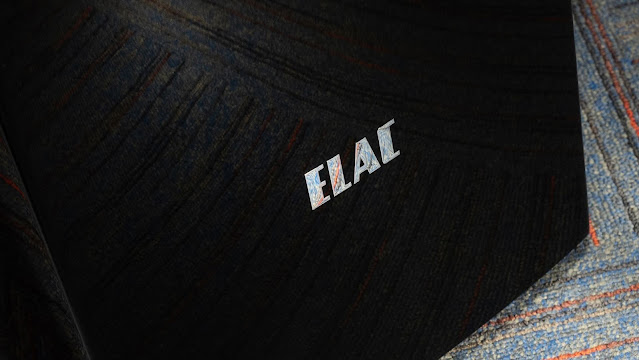Test floor acoustics ELAC Concentro S 507: achievable height
Acoustics Concentro has become a kind of manifesto for ELAC. The essence of the message is simple: nothing is impossible for true craftsmanship, and the degree of perfection of our speakers is determined solely by your financial capabilities.
We have already met with 140-kilogram giants 168 cm tall and found out that in addition to the almost eight-million price tag, the circle of their potential owners is narrowed down by very serious requirements for the volume and acoustic preparation of the room. In other words, in an average living room, these speakers will not fully play. And if so, there is a need for a truly high-class, but more democratic acoustics, no matter how paradoxical this phrase may sound at first glance.
Replenishment in a noble family
The way this world works is that the models of the highest class (whatever it is about) are available to very few. But this does not mean at all that real connoisseurs, somewhat limited in funds or living space, should be content with consumer goods. That is why close relatives began to appear at Concentro, and the name of the model turned into the name of a whole family.
The range currently includes four floorstanding speakers, as well as bookshelf speakers and a center channel speaker. And today we will talk about the smallest and most affordable towers - of course, by the standards of the ultra-elite ELAC Concentro family.
In fact, the S 507 are very solid 4-way systems with seven (!) Speakers. The height of the case is 122 cm, the weight of each speaker is 37 kg - in other words, there are no compromises in terms of weight and size indicators here at all.
The art of standing on heels
The electro-acoustic talents of ELAC engineers have never evoked anything other than unconditional respect. The quality of assembly and finishing of cases was also always on top, and in terms of design, the work of serious pros was felt. But personally, I sometimes had the feeling that progressive design trends were bypassing the northern city of Kiel. Therefore, the appearance of the speakers is associated with the slogan of another famous German brand - “Quadratisch. Praktisch. Gut!" Well, you remember, of course.
So, the period of parallelepipeds in the history of ELAC has successfully ended, and with the advent of Concentro (and the renewal of other lines), it became clear that now designers are really capable of aerobatics.
It is interesting that Concentro S 507 differs significantly from the larger Concentro and Concentro M in the shape of the body. The monumental oval on a cast aluminum pedestal has given way to a design no less complex, but more refined and elegant. Just don't think that older Concentros look less presentable. It's just that both of these art objects are made in different styles, because they will exist in spaces of fundamentally different volumes and formats.
The narrow front panel of the S 507 tilts back slightly towards the top. The wide sidewalls seem to be pulled together to the rear panel, and the bottom of the case goes up rather sharply and rests on two thin metal supports. Audiophiles dubbed them heels - and indeed, in terms of the elegance of forms, these acoustics may well compete with fashionable shoes.
Only unlike extravagant couturiers, a technical designer cannot afford to create beauty in isolation from practical value. So the absence of parallel planes in the case is due to the struggle with internal resonances, and the free space under the “heels” is due to the desire to bring the phase inverter port down and facilitate the placement of speakers in the room.
By the way, a similar location of the port, though not in such an elegant design, was also received by acoustics of the Vela series.
Loyalty to ideals
Despite the radical change in shape, the set of speakers and the acoustic scheme of the "507th" are fully consistent with the principles of building an older reference model. There are not two emitters on the front panel, as it might seem at first glance, but three. The stepX-JET coaxial assembly combines JET 5's proprietary ribbon tweeter and an aluminum cone midrange driver. Actually, the name Concentro came from the coaxial - concentric - arrangement of these drivers.
Let me remind you that a tweeter operating on the principle of an acoustic Hale transformer is one of the cornerstones of the ELAC sound philosophy. The hand-folded polymer harmonica, placed in a powerful, perfectly uniform field of a flat neodymium magnet, produces the most linear and dynamic sound at frequencies up to 50 kHz.
Another key signature feature is the dual-layer cones of mid- and low-frequency speakers, glued together from a thin aluminum sheet and cellulose. In this way, it is possible to combine torsion rigidity, which resists deformation, and effective suppression of resonances in a sufficiently wide frequency band.
Below the coax is an 18 cm mid-bass driver. It is armed with an advanced version of the dual-layer diaphragm, called the AS-XR (Aluminum Sandwich - Extended Range). Its aluminum surface has a complex three-dimensional structure, reminiscent of the facets of a crystal. It further enhances resistance to parasitic bending and provides a purely piston-like movement throughout the entire operating range of the head.
The bass section contains as many as four 15 cm woofers placed on the side surfaces of the cabinet. They work in push-push/pull-pull mode, so multidirectional waves do not allow low-frequency vibrations to roam in the case. The cabinet itself is made of thick MDF panels and reinforced with several internal partitions. It can be finished in black or white piano lacquer.
Borders and transitions
Structural diagram of Concentro S 507 is not easy, but absolutely logical. A ribbon tweeter is responsible for ultra-high and high frequencies, transferring powers to a coaxial aluminum cone at 2.6 kHz, carefully coordinated with it not only in phase, but also in dynamic characteristics
From 400 Hz, a paper-metal midbass with a faceted Crystal Membrane diaphragm comes into play, and below 120 Hz, four 15-cm woofers, also built on an aluminum-cellulose sandwich, start to work. Their total radiation area and body volume are sufficient for operation up to 24 Hz. This value was obtained in accordance with the IEC 268-5 standard, i.e. at a level of -10 dB.
As we can see, the interfaces are smoothed as far as possible by the selection of similar emitter materials, so that sharp tonal jumps are not expected on them. The sensitivity of our seven-driver design turned out to be not too high (88 dB), and the impedance at 360 Hz drops from the nominal 4 ohms to 3, so the choice of amplifier should be approached especially carefully.
The test setup used the Plinius Reference A-150, a high-end device with a power of 220 watts per channel (4 ohms), which can work in classes A or AB and delivers current up to 50 amperes to the load. Plinius RM-10 reference class preamplifier and Stellar Gain Cell DAC from PS Audio worked in conjunction with it. Speaker wires - Nordost Heimdall 2.
From the accordion to the organ
The audition started with good old Chicago blues. "I'm Ready" by Muddy Waters (remastered by Epic in 2004) sounded very cheerful and bright in a good way. Rhythm section, harmonica and, of course, the guitar harmoniously wove the melody, absolutely not shading or shouting over each other. The instruments sounded so alive, as if someone had opened the door to the studio where the musicians really play.
The parts of the instruments after the remaster pleased with dynamics and resolution enviable for 1978, which cannot be said about Muddy's voice. Sound engineers clearly did not dare to take it seriously. Meanwhile, the legendary bluesman was already 65 at the time of recording, and it looks like he was singing into an old-school ribbon microphone.
So, this slight inconsistency in the groovy blues drive of the Concentro S 507 was revealed simply with surgical precision, but without medical detachment. The sound turned out to be truly alive: embossed, rich in overtones and impeccably detailed, but not at all harsh at the top. Moreover, with increasing volume, the level of distortion increased minimally. It's like driving a fast powerful car that just provokes you to step on the gas, but maintains control over the track even at very high speeds.
When testing serious German acoustics, I always listen to Alphaville on it. I just can not deny myself the pleasure of the perfect symbiosis. And this time, too, there was a feeling that the record “Prostitute” was mixed right on these speakers. Hale emitters are known for their excellent micro-resolution, so in the midst of fine percussion and spatial effects, their talents turned out to be simply irreplaceable.
And one more important point. "Five hundred and seventh" are equipped with three pairs of interchangeable rings that change the direction of the coaxial driver. With their help, you can precisely adapt the spatial characteristics (depth and focus) to the geometry and / or sonority of a particular room. In a word, the music scene at Alphaville turned out to be extremely holographic, with precise positioning and correct scales of instruments and vocals.
The low-frequency section was also not idle at this time. Four woofers formed a dense, energetic and agile bass foundation. Moreover, this did not require a huge space, vital for the older Concentro. It is clear that in our case, the range below 35 Hz turned out to be much less energy-intensive, but in general, the quantity and quality of the bass was impressive. Perhaps, in club genres, they will even have to be reined in a bit by experimenting with the position of the speakers in the room.
Quality mark
Nothing so cynically demonstrates the imperfection of any speakers as good recordings of organ concertos. Therefore, in the end we put the famous Toccata and Fugue in D minor BWV 565 by Bach (Helmut Walch, DeutscheGrammophon).
I did not find myself in a Gothic cathedral at the same time, but on the scale provided by the room, the sound turned out to be very convincing. The phase accuracy, amazing for a four-band system, gave rise to an open transparent sound, in which not only the registers, but also the overtones of individual pipes of a huge instrument were easily read.
Excellent resolution over the entire range (except for the deepest lows, of course), quite decent dynamics and careful study of space ... Of course, we have acoustics worthy of participation in the flagship Concentro squadron. That's just for the price and installation requirements, it is much more democratic than its companions.
Pros
Compared to uncompromising prototypes, the five-fold price reduction did not lead to a commensurate loss in design, finish, or sound class.
Cons
Not a problem, but a feature: you won’t be able to save on amplification, don’t even try.
OFFICIAL SITE
PASSPORT DATA
Number of lanes: 4
Number of speakers: 7
Acoustic design: phase inverter brought to the floor
Frequency response (according to IEC 268-5): 24 Hz - 50 kHz
Impedance: 4 ohms (min. 3 ohms at 360 Hz)
Sensitivity: 88dB/2.83V/1m
Crossover frequencies: 120/400/2600 Hz
Rated continuous power: 240W
Rated peak power: 300W
Recommended amplifier power: 60 - 500 W
Dimensions (WxHxD): 270x1220x380 mm
Weight: 37 kg (each)


















.jpg)



0 Comments